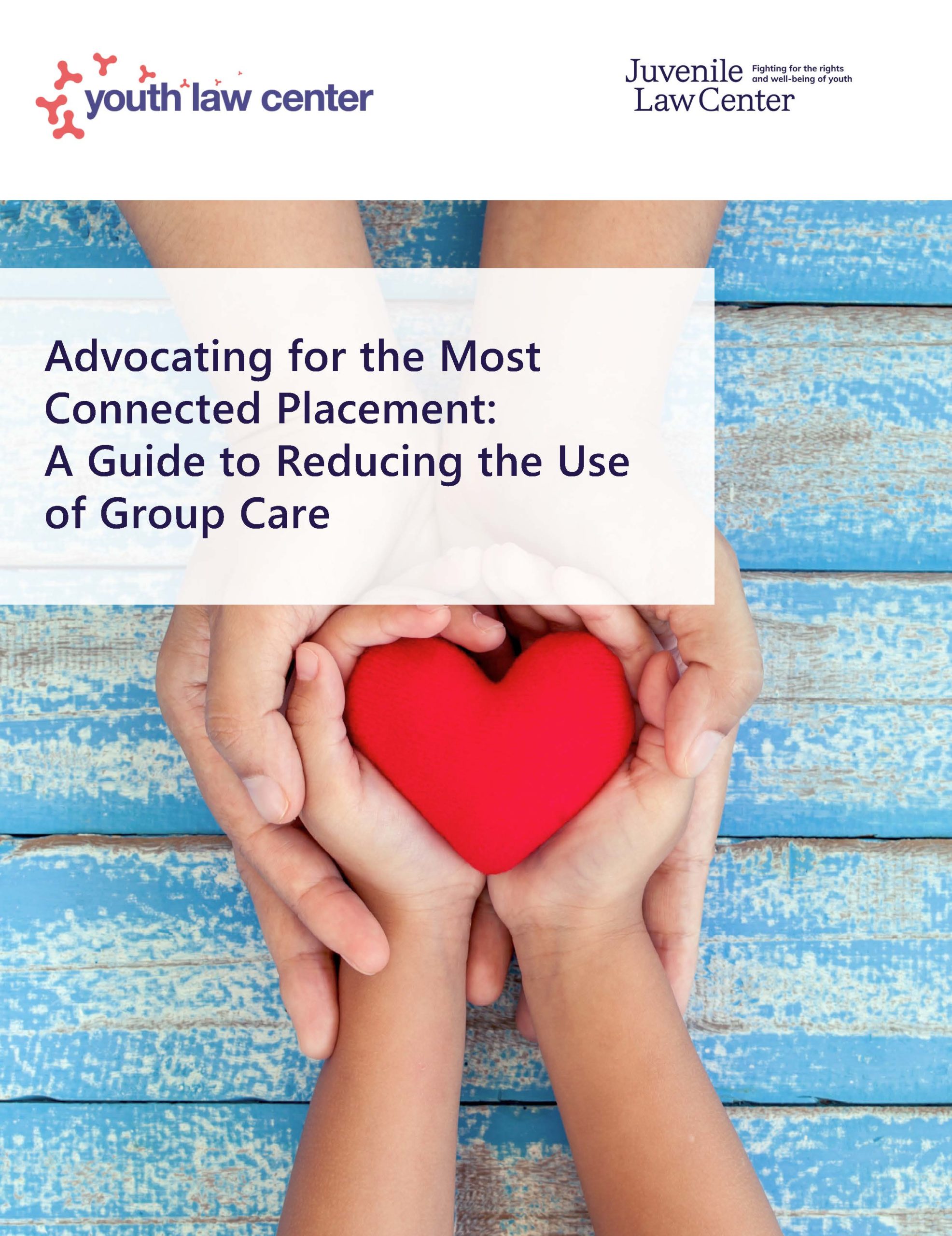The Family First Act presents a challenge for advocates and policy makers to reorient the child welfare system to prioritize and support young people’s connections with family. This challenge is reflected in one of the most promising and exciting aspects of the law: incentives to reduce the use of group care and ensure more youth are placed in family-based settings. Effective implementation of this aspect of the Family First Act will require hard work at both the individual case and system level. To help, Juvenile Law Center and Youth Law Center are releasing a new toolkit, Advocating for the Most Connected Placement: A Guide to Reducing the Use of Group Care, that attorneys and advocates can use to help youth experience the most connected placements now and to set expectations for systems change as Family First Act implementation occurs.
JLC and YLC have long been on the forefront of the effort to end the use group care. Despite the overwhelming research that group care is not just ineffective, but also harmful to youth, far too many youth in the child welfare system are growing up in these settings. The over-use of group care is a system-wide problem, but has special impact on transition aged youth, with one-third being placed in group homes or institutions.
In placing restrictions on the use of group care for young people and incentivizing family-based placements, the Family First Act gives advocates the opportunity to transform the way the system thinks about placements. Instead of seeking the “least-restrictive placement,” systems and advocates should work to ensure that young people are in the “most connected placement.” A “most-connected placement” is a placement where young people can receive the parenting and care that are indispensable for healthy child and adolescent development and critical for healing. These are family based settings where youth can live with relatives, adults they have developed connections with, or individuals in the community who are able to care for and nurture them and act in a parental role as the team works towards placement with family or kin. A “most-connected placement” can and should be enhanced by supports, including, but not limited to, services, treatment, and financial and other resources depending on the needs of the child and family.
The challenge for attorneys and advocates is to both eliminate group care and to provide—and build where they do not exist—the services, supports and resources that families and caregivers need to parent youth. This is hard work, but Advocating for the Most Connected Placement: A Guide to Reducing the Use of Group Care is intended to be a practical tool that can be used by attorneys and advocates to ensure that youth are in living settings where they can be connected with family, the community, and a support system. In addition to the Family First Act, there are many existing legal requirements that can be marshalled on behalf of youth and your advocacy can make a huge difference. Advocating for the Most Connected Placement takes advocates through questions to guide their analysis and advocacy as they confront situations where youth are not in the most connected placement and instead are being moved to or continue in group settings. Each section provides concrete suggestions for actions you can take in and out of court to get your clients in the most connected placements where they can have their needs met and thrive. It also provides the legal and social science authority to support the suggested actions. Actions range from filing motions, holding hearings, researching licensing complaints of facilities, filing grievances and inviting family members and youth to team meetings related to placement changes. The current version of the Guide includes federal law supports and social science research supports for the various recommended actions as well California law. We look forward to further developing this tool so that each state can include their own state law supports.
Click here to read the full toolkit: https://www.ylc.org/wp-content/uploads/2019/05/Connected-Placements-Toolkit.pdf

